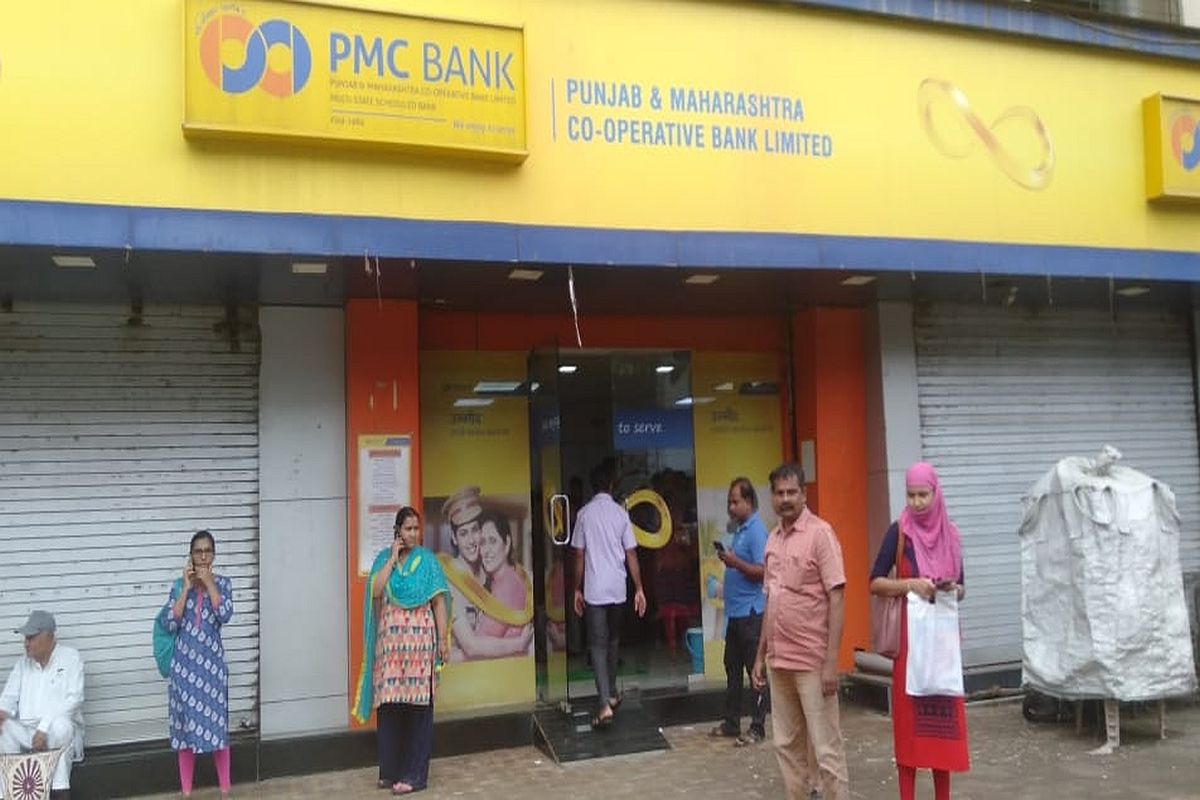RBI MPC kees repo rate unchanged at 6.5%, inflation for FY25 at 4.5%
Reserve Bank of India (RBI) Governor Shaktikanta Das at the Monetary Policy Committee (MPC) meeting on Friday announced the policy rate unchanged at 6.5 per cent.
Essentially, it is the routine disclosure breach that is most corrosive, indicating collusion, misleading of regulators, inflation of revenues and suppression of delinquency.

A branch of the Punjab and Maharashtra Cooperative (PMC) Bank. (File Photo: IANS)
The Reserve Bank of India’s announcement on October 4 that it is revamping its regulatory and supervisory structure and creating a specialized cadre to address frauds has come not a day too soon. The shocking revelations courtesy the Punjab Maharashtra Co-operative Bank (PMC) scam, with PMC charged with deliberately misreporting bad loans given to the Mumbai-based Wadhawans, owners of Housing Development and Infrastructure Ltd, underscores the continued reluctance of the banking system to respect norms of due diligence.
It is thus high time that the RBI strengthened its “offsite supervision as well as its analytical vertical along with the core pillars of onsite supervision, offsite, market intelligence and statutory auditor angle”, as it now promises. How a regularly audited bank could have loaned Rs 6,500 crore to the realtor on its total asset book of Rs 8,383.33 crore (as on March 31) beats imagination even in a country that takes bank scams in its stride. More worrisome is the alarming hike in bank frauds that have jumped by 74 per cent, to Rs 71,543 crore in 2018- 19, as pointed out by the RBI annual report for 2019.
The average lag between the occurrence of frauds and their detection was 22 months as frauds added up to a tidy Rs 41,167 crore in FY18 with state-run banks taking top honours. The frauds profile shows bank groups and state-run lenders account for the bulk of them in 2018-19, followed by private sector and foreign banks. Interestingly, loan-related frauds constituted the dominant share, frauds in off-balance sheet items declined from a year ago, frauds relating to card/internet banking and deposits constituted only 0.3 per cent of the total value of frauds in 2018-19, while 72 cheating and forgery cases formed the major components.
Advertisement
That frauds involving less than Rs 1 lakh accounted for only 0.1 per cent of the total indicates that it is the big gun, of the Nirav Modi brand, that leads the swindling pack. As the former Reserve Bank governor, Raghuram Rajan, had pointed out to Parliament in September 2018 in his detailed 22-page note, frauds haunting India’s banking system often represent “patently illegal action, by either the borrower or the banker” and that banks were badly hamstrung in their pursuit of debt recovery from large promoters.
Essentially, it is the routine disclosure breach that is most corrosive, indicating collusion, misleading of regulators, inflation of revenues and suppression of delinquency. These make for multi-layered crime, as was the case with Modi. That the jeweller, remanded to custody at U.K’s Wandsworth prison till October 17, manages to evade extradition typifies the problems India faces in bringing the guilty to book.
Advertisement